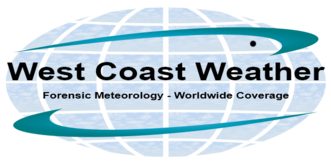Nature’s deadliest surprises, tornadoes can spontaneously develop in supercell thunderstorms, along squall lines, near the ends of bow echoes, and within hurricanes after they’ve moved ashore. They may generate the strongest winds of any atmospheric phenomenon: over 200 mph. Annually, they kill dozens and injure hundreds. Typically they are responsible for around $100 million in
Read More
Frontal squall lines form just ahead of surface cold fronts and dry lines, and also ahead of upper-level fronts. If the necessary conditions exist, they may stretch to hundreds of miles in length. They may bring tornadoes and hail but they’re more commonly associated with strong straight-line winds. If the flow along a squall line
Read More
Hook echoes are meteorological phenomena named after their shapes. They’re created when vertical wind shear causes warm, moist air, sucked in by the unstable movements of a supercell thunderstorm, to mix with a different incoming channel of drier, cooler air. The shape they assume resembles a hook because the two streams of air aren’t mixing
Read More
The General Circulation Models (GCM) are weather forecast models that predict general weather patterns for many years out. Some of these models forecast out to 30 to 50 years. The main purpose is to run different variables to see what extent man impacts are on climate (Global Warming or Climate Change). One of the main
Read More
The winter of 2013-2014 is not quite over as the forecast models continue to show cold air masses that will continue to move down from the north and impact Midwest and East Coast of the US during the week of 2-24-2014. Just how cold was January 2014? According to this source, there were 4406 cold
Read More
Lenticular cloud formation (like photo above) are photo gems that we love to view. However, if you are in an airplane you probably want to avoid. These clouds can be found quite often in the mountain areas of Western US. They usually form when we have strong westerly winds aloft. The danger is in Rotor
Read More
Atmospheric rivers (AR) are long and narrow bands of highly-concentrated moisture in association with winter storms and occur throughout the middle latitudes near major oceans. Thus the US West Coast is subject to this. The amount of moisture can be extreme especially when the air is forced up the mountains along the West Coast. How
Read More
January 6 and 7 of 2014 brought many record cold temperatures (F) and here is a very brief list: Chicago -16, Toledo -14, Cleveland -11, New York City +4, and Pittsburgh -9. Now (1-28 and 1-29) another arctic air mass is sweeping into the Southeast US and snow and ice storms will sweep across much
Read More
Much of our weather work is gathering historic weather data for clients and providing detailed analysis. It is certainly interesting looking at historic data and recreating what happened. However we do plenty of operational weather forecasting in United States and also on a worldwide basis. The main focus now is the cold weather experienced so
Read More
Aircraft accidents are less likely to occur today than years ago and this is the case even with the growing number of aircraft in operation. From 1959 to 2008 there were 27,877 onboard fatalities and comparing the same statistic for 1999 to 2008 there were 4717 fatalities. Certainly good news. The Aircraft Crashes Record Office
Read More
